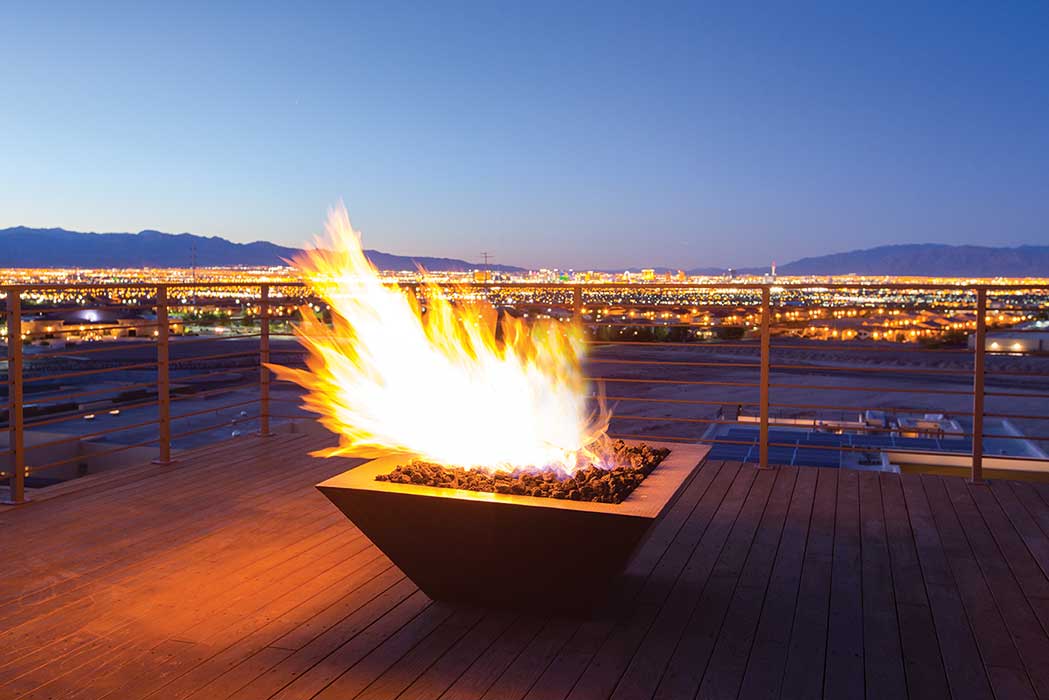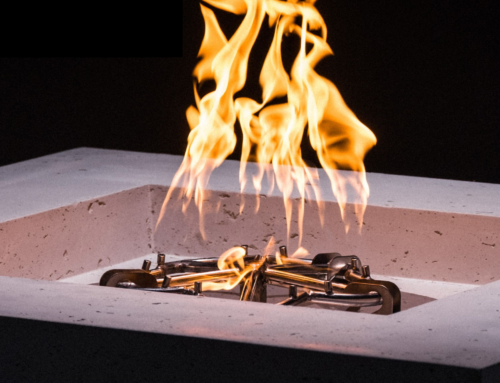Tech Talk – Ventilation Requirements: Why Ventilation Matters
HPC is dedicated to creating fire designs inspired by safety and innovated for your lifestyle. Purchasing HPC designs extends our customers a guarantee that they are getting carefully curated designs rooted in research and engineered to withstand the tests of time. Empowering our customers with knowledge is a true mission for HPC. This Tech Talk is dedicated to discussing why proper ventilation is imperative as well as HPC’s recommended ventilation requirements to ensure safety and functionality of every fire design.
Ventilation:
When constructing an enclosure for an HPC Fire insert, it is imperative to plan for proper points of ventilation. Installing points of ventilation ensures that your fire feature will have a supply of clean air, and promotes proper venting for excess gas as well as condensation and heat. Neglecting installing vents in the enclosure can lead to damage to the fire appliance components as well as severe safety issues.
For HPC Fire units ranging from 65,000-200,000 BTU, HPC recommends a minimum of two openings approximately 18 inches and spaced at least 180 degrees apart. Units above 200,000 BTU, HPC recommends utilizing four vent openings that are approximately 18 inches and spaced 180 degrees apart. There are no specifications in terms of elevation, as to where on the enclosure that the vents are required to be placed. However, over the years HPC has found several functional benefits to placing the vents at grade level. By placing the vents towards the bottom of the unit it creates further opportunities for drainage and it is aesthetically less obtrusive.

Why Ventilation Is Important:
1-For Safety and Functionality:
Proper venting provides a direct route for any trace gasses that have accumulated to flow out of the enclosure.
- Liquid Propane (LP), is very heavy. Residual LP will sink around the pan as well as the bottom of the enclosure. Without venting the gas will build up in the unit creating a flash or blow-out. The vents promote airflow which carries away any unspent fuel out avoiding the safety issues of fuel build-up.
- Natural Gas: While Natural gas is less volatile, vents promote proper airflow and will provide a path for any unspent fuel out of the enclosure.
2-Temperature Control-
Critical placement of vents promotes the release of excessive heat.
- As an added safety feature, HPC’s electronic fire appliances have a thermal shut-off switch. This switch is triggered when temperatures within the unit reach 190 degrees Fahrenheit. In turn, the unit’s power is disconnected and it will not relight until it has cooled. The use of vents promote proper airflow and carries the heat out preventing the unit from reaching excessive temps
3-Managing Moisture/Condensation:
Without ventilation, the heat cycles can cause condensation build-up in the box as well as in the enclosure, which can lead to issues with mold and mildew. Ventilation allows airflow to promote evaporation of residual moisture.
4- Combustion:
Ventilation provides a source of fresh air for the pilot as well as the ignition and burner promoting optimal conditions for reliable combustion.
Customer Satisfaction:
HPC values knowledge and invests in the exploration of best practices as well as engineering to ensure the quality and performance of each fire design. HPC stands by our units and offers our customers a lifetime guarantee warranty.
Let our dedicated Certified National Fire Institute Tech Team as well as our Customer Specialists field any questions or concerns. Our team will walk you through from start to finish ensuring your fire appliances exceed your desires. Reach our HPC Fire Inspired Team at 937-436-9800 or at Info@HPCFire.com.




